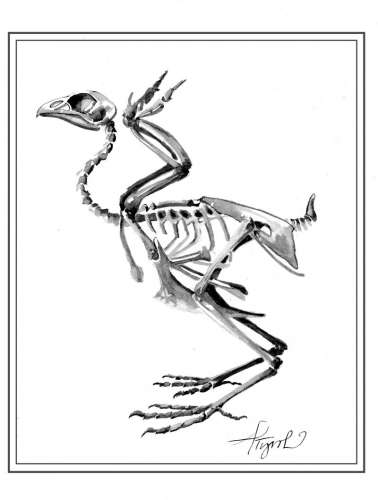
Legend tells us that Benjamin Franklin wanted the turkey as our national bird. Too bad it’s not.
The bald eagle is thought to possess attributes admired by our American culture — intelligence, courage and a noble bearing. These huge birds may be smart and magnificent, but they are of questionable character. They are robbers, carrion eaters and predators of weak and dying fish. They dive-bomb ospreys and force them to give up their prey —obvious thievery. Bald eagles are handsome hunks, but they are not especially admirable.
Here in New Hampshire and Vermont, in turkey country, it is the gobblers that impress me most. Old Ben was right. They are alert, industrious, sociable and as intelligent as any bird, except maybe a few crows or parrots.
I have come to know and appreciate turkeys in my neck of the woods near St. Johnsbury, Vt.; and recently I learned how to use a turkey call, so I could coax them nearby and become better acquainted. Sure enough, one responded to my call with the familiar “keow” that a turkey uses to contact others. Before long one bird’s calls grew louder as it climbed a ravine, finally standing just 50 yards from me at the edge of the woods. Turkeys have excellent eyesight and their motion perception is extraordinary. The bird peered around a tree, inspected me and decided, “That’s no turkey!” and left.
Turkeys like company. A neighbor counted more than 50 on his farm last winter, and not long ago I watched a dozen warming their toes on a steaming compost pile. Back in colonial times they congregated in flocks by the hundreds.
A turkey cannot match an eagle as a flying machine. The two forms of flight are fundamentally different. The eagle soars; the turkey flaps its wings laboriously, then glides to its destination. The wing muscles and the skeleton of a turkey are not designed for sustained flight, so the birds spend much of their time on the forest floor, where they hunt for berries, nuts, fruits, acorns and insects.
Turkey habitat changes with season. As a rule, in summer they prefer woods bordering on agricultural fields where they glean bugs in hay fields and corn in cornfields; in fall they are likely to look for nut trees for food, but in winter they will head a bit deeper into the woods to find mature roost trees and conifer wind breaks.
Now, in spring, we are seeing them just about everywhere. In open country they usually escape predators by running rapidly. When they are on the move, anyone hoping to follow them is in for a challenge, as John Audubon himself learned when he once tried — and failed — to chase some down on horseback. If they take to the trees, they do so with explosive flight.
A tom’s spring gobble is part of a once-a-year mating ritual. In early April a tom gobbles more often and louder than at most any other time. Soon he shows off his plumage – an astonishing and ostentatious display designed to make him huge and threatening to rivals, and irresistible to the less-glamorous females. Erecting and spreading his tail feathers into a magnificent fan, he tucks down his big head with inflated wattles swinging back and forth. Wings are lowered with shafts rattling on the ground. Loud, deep gobbling erupts from his throat. What female can resist such a splendid performance?
After mating, the hen prepares a shallow, concealed nest on the forest floor, and lays roughly 10-12 eggs. (Occasionally nests with unusually high numbers of eggs have been found, prompting some naturalists to speculate that more than one female might lay eggs in a single nest.) When a hen leaves the nest to forage for food, she scratches forest litter over the eggs, camouflaging the nest and preserving its warmth. After four weeks’ incubation, the eggs hatch and the chicks follow their mother on the ground; and two weeks later the chicks can thrash their way into low-lying tree limbs. For the rest of the year, females and their offspring stay together, while adult males often hang out together.
Wild turkeys must be wary, for their predators are legion. Foxes, skunks, hawks, owls, ravens, dogs and coyotes feed on turkey eggs, poults and adults.
The turkeys that weigh down our holiday tables, the birds that are stuffed and surrounded by potatoes and gravy, bear scant resemblance to those we now see in the wilds. Somewhere in the domestication process their alertness and svelte figures were lost, their color turned largely white; and they became stupid. Domestic turkeys cannot survive in the woods.
Ben Franklin was right about the wild turkey though. Is there anyone else out there who believes this admirable bird should be on our currency instead of the bald eagle, that thieving imposter?

